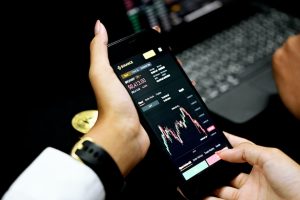Foreign exchange, or forex, trading is a popular investment option for those who want to make money by trading different currencies from around the world. Forex trading involves buying and selling currencies in pairs, and traders make money by taking advantage of the fluctuations in the exchange rates of different currencies. One of the most important concepts in forex trading is the concept of margin level, which is used to measure the amount of available funds a trader has in their account.
Margin level is a critical measure of a trader’s available funds in their forex trading account. It is calculated by dividing the trader’s equity by the margin required for the specific trade. Equity refers to the total amount of money a trader has in their account, including profits and losses, while the margin required is the amount of money needed to hold a position in the forex market. When a trader opens a position, they must deposit a certain amount of money as collateral to ensure that they can meet the obligations of the trade. This amount is known as the margin requirement, and it varies depending on the amount of leverage used by the trader.
To understand how margin level is calculated, it is important to first understand how leverage works in forex trading. Leverage allows traders to open positions that are much larger than their initial deposit. For example, if a trader has a leverage ratio of 100:1, they can open a position worth $100,000 with a deposit of only $1,000. This is because the leverage ratio multiplies the trader’s deposit by the ratio, allowing them to control a larger amount of money in the market.
However, leverage also increases the risk of loss, as it amplifies the impact of any fluctuations in the market. If the market moves against the trader, they may have to deposit additional funds to meet the margin requirement and avoid having their position closed automatically. This is where the concept of margin level comes in.
Margin level is calculated by dividing the trader’s equity by the margin requirement for the specific trade. For example, if a trader has deposited $10,000 into their account and is using a leverage ratio of 100:1 to open a position worth $1,000,000, the margin requirement would be $10,000 (1% of the total position value). If the trader’s equity is currently $15,000, the margin level would be calculated as follows:
Margin level = (Equity / Margin requirement) x 100%
Margin level = ($15,000 / $10,000) x 100%
Margin level = 150%
A margin level of 150% means that the trader has 50% more available funds in their account than the margin required for the trade. This gives them a buffer in case the market moves against them, and they need to deposit additional funds to meet the margin requirement.
If the margin level falls below a certain threshold, the trader may receive a margin call from their broker, requiring them to deposit additional funds to meet the margin requirement. This is because if the trader’s equity falls below the margin requirement, their position may be automatically closed by the broker to avoid further losses.
In conclusion, margin level is a critical concept in forex trading that measures the amount of available funds a trader has in their account. It is calculated by dividing the trader’s equity by the margin requirement for the specific trade and is essential in managing the risk of trading with leverage. By understanding how margin level is calculated, traders can make informed decisions about their trades and manage their available funds more effectively.






